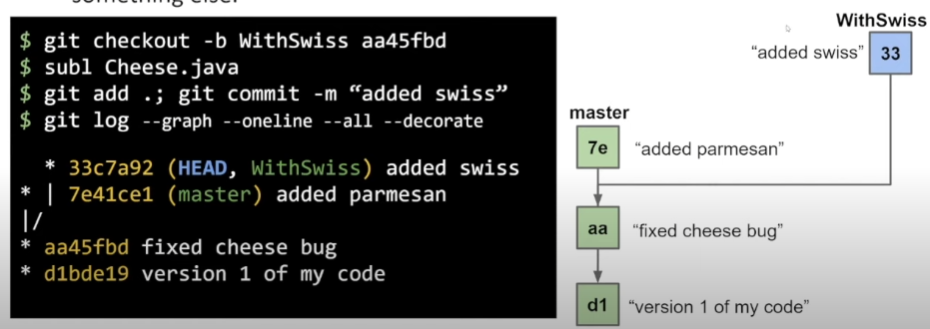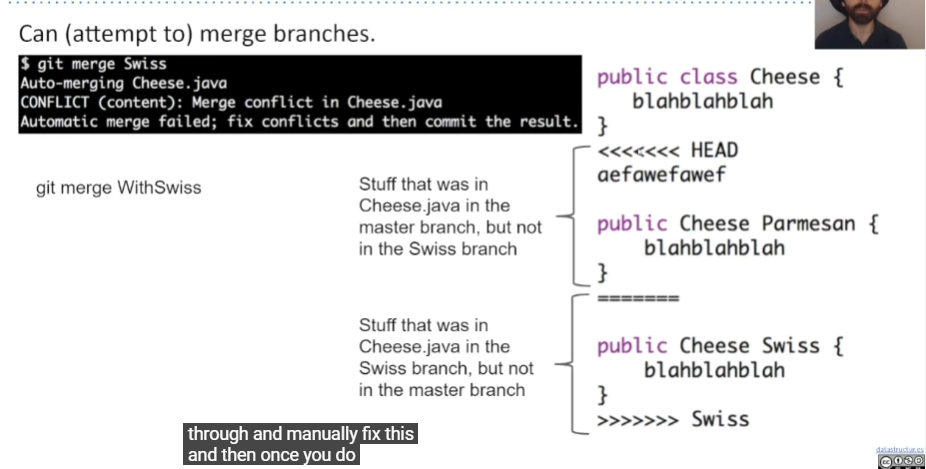git-note
Git
Git is a distributed version control system.

Git commands
git init- initialize a directory to be git repository.
git status- check the statues of a git repository directory.
git add [filename]- add files to wait for committing.
git commit -m "message"- commit changes.
git log- check the log information.
git checkout [commit number]- go back to the particular commit status.
checkoutcontrols “head” pointer.
- go back to the particular commit status.
How Git use git-SHA1 Hash
Example of how git uses the git-SHA1 hash to store HelloWorld.java
- First, git computes the git-SHA1 hash:
- HelloWorld.java -> 66ccdc654c9d156d5c796dbe6ed768430c1562a2
- Git creates a folder called .git/objects/66
- The 66 is the first two characters of the git-SHA1 hash.
- Git stores the contents in a file called ccdc654c9d156d5c796dbe6ed768430c1562a2.
- File is stored in a compressed format (zlib) to save space.
Git Commits
Every commit in git stores (at least):
- An author
- A date
- A commit message
- A list of all files and their versions
- Versions are git-SHA1 hashes
- The parent’s commit ID.
Branching
A common feature in version control systems is the ability to create branches
- e.g. might “branch” frtom aa if i don’t trust the code in 7e and want to try something else.
use checkout -b [branch name] [parent commit ID] command to create a branch

Merging
git merge [branch name]

All articles in this blog are licensed under CC BY-NC-SA 4.0 unless stating additionally.
Comment

